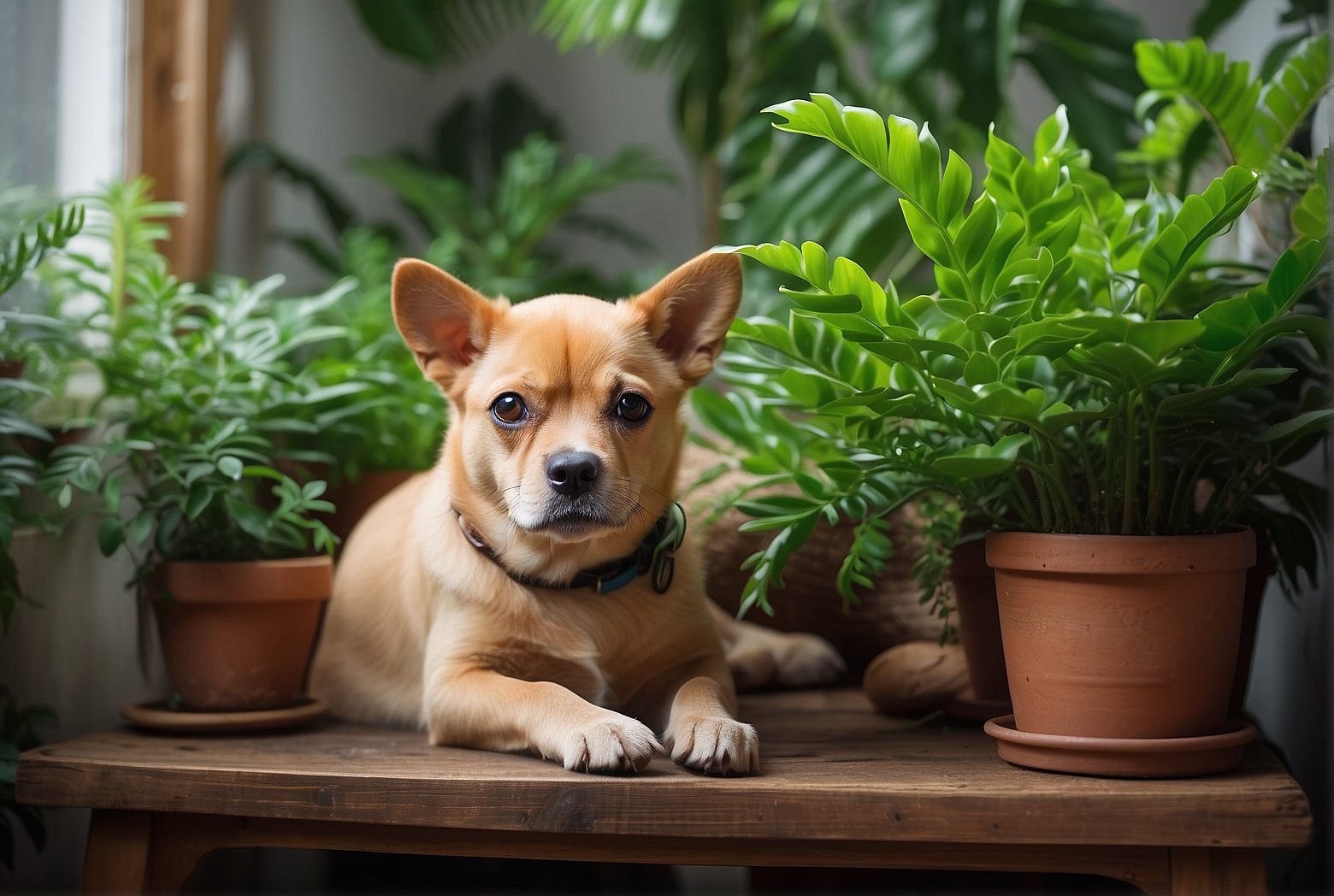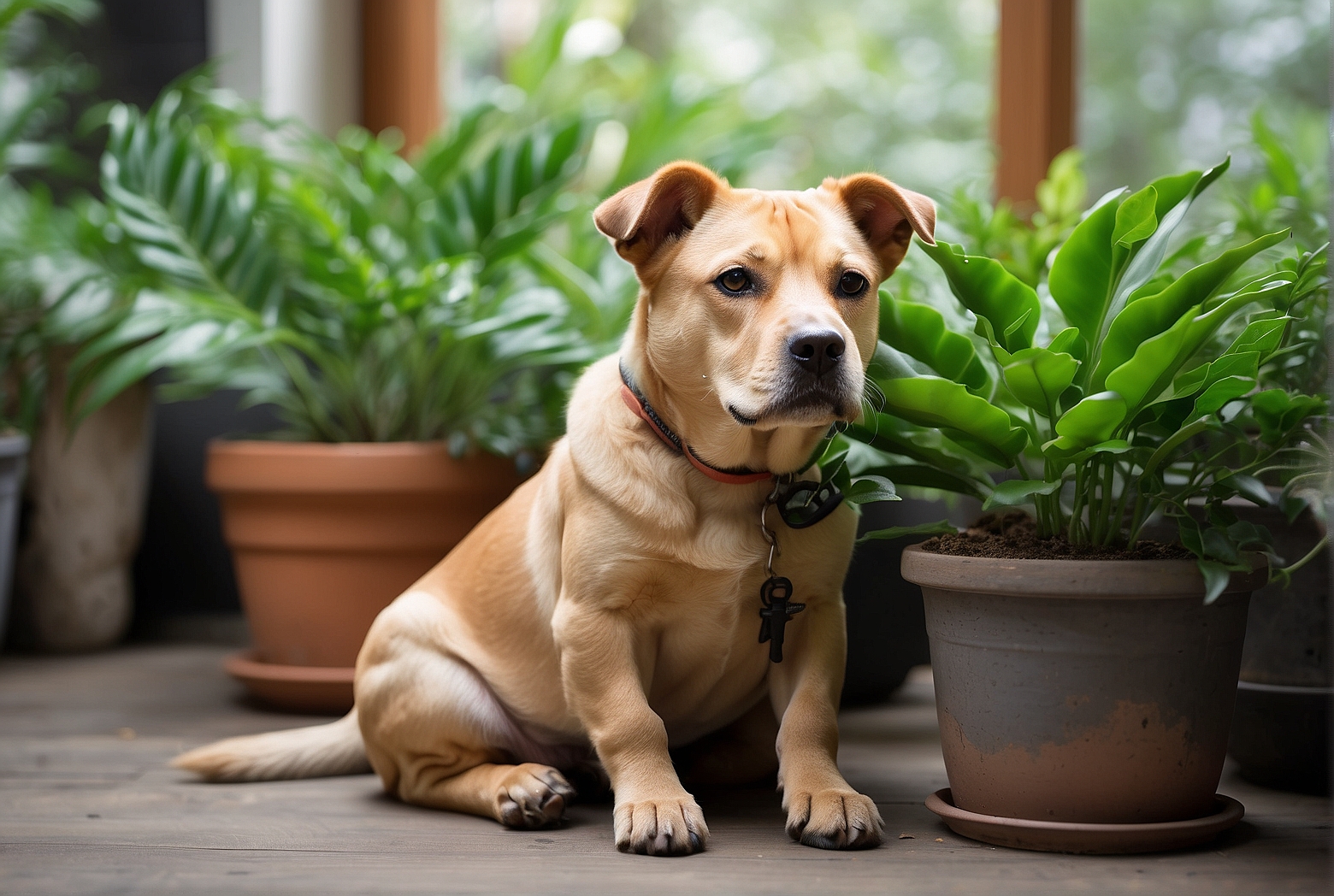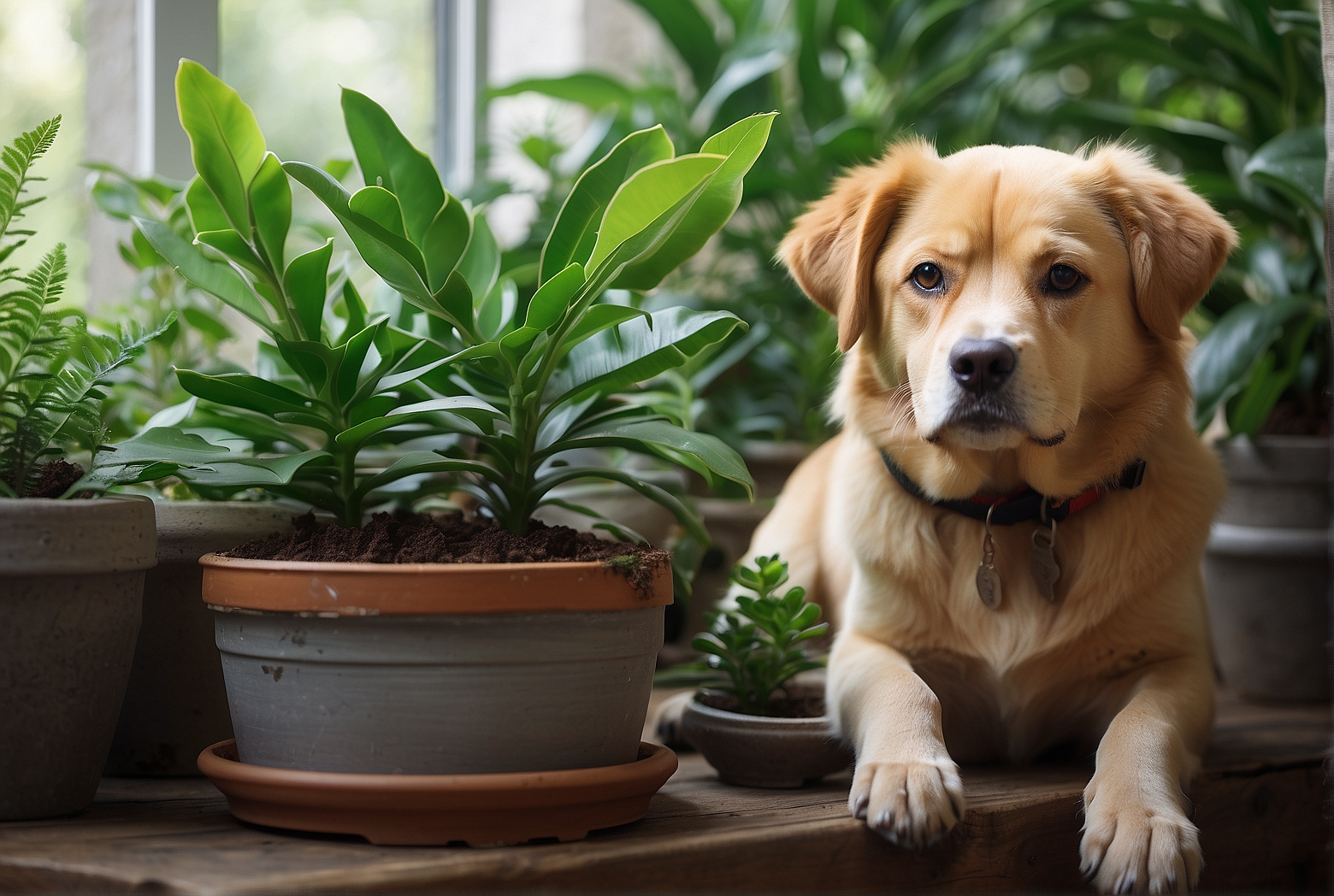Last Updated on April 3, 2024 by Tony Manhart
Did you recently bring home a ZZ plant, but you’re worried if it could be harmful to your furry friend? Well, fret not! In this article, we will explore whether ZZ plants are toxic to dogs or not. As pet owners, it is crucial to be aware of the potential risks of certain plants in our homes. So, let’s dive into the facts and dispel any concerns you may have about the safety of ZZ plants for your beloved canine companion.
Introduction to ZZ Plants
Overview of ZZ Plants
ZZ plants, also known as Zamioculcas zamiifolia, are popular indoor plants that are loved for their attractive glossy leaves and resilience to various growing conditions. These plants are native to Eastern Africa and have gained popularity among plant enthusiasts due to their low-maintenance nature. However, it is important to be aware of the potential risks they pose to our furry friends, especially dogs, as ZZ plants contain toxic compounds that can be harmful if ingested.
Appearance and Characteristics
ZZ plants are characterized by their unique feather-shaped, dark green leaves. The leaves grow in pairs along the stems, giving the plant a visually appealing appearance. With their ability to grow up to three feet in height, ZZ plants can be an attractive addition to any indoor space. Additionally, these plants are known for their tolerance to low light conditions, making them an ideal choice for those who struggle to keep other plants alive.
Popularity as Indoor Plants
The popularity of ZZ plants as indoor plants can be attributed to their adaptability and resilience. These plants can thrive in a wide range of indoor environments, including low light areas, making them suitable for various homes and offices. Their ability to tolerate neglect and periods of drought also adds to their appeal, as they require minimal care and attention. As a result, ZZ plants have become a favorite choice for indoor gardeners, adding a touch of greenery to any space.

Toxicity in ZZ Plants
Toxic Compounds in ZZ Plants
While ZZ plants may be aesthetically pleasing and easy to care for, it is important to note that they contain toxic compounds that can be harmful to dogs if ingested. The main toxic compound found in ZZ plants is calcium oxalate, which is primarily present in the leaves. This compound can cause irritation and swelling in the mouth, throat, and digestive tract when ingested by dogs.
Effects of Ingesting ZZ Plants
When a dog ingests ZZ plant leaves, the calcium oxalate crystals present in the plant can cause discomfort and adverse health effects. The crystals are sharp and can cause injury to the dog’s mouth and digestive system. Ingestion can result in symptoms such as excessive drooling, vomiting, diarrhea, and difficulty swallowing. In severe cases, it can even lead to respiratory distress or organ failure, although such cases are rare.
Common Symptoms in Dogs
If a dog has ingested ZZ plant leaves, several common symptoms may be observed. These can include excessive drooling, pawing at the mouth, vomiting, diarrhea, and difficulty swallowing. It is important to note that the severity of symptoms can vary depending on the amount of plant ingested and the size of the dog. If you suspect that your dog has ingested ZZ plant leaves and is displaying any of these symptoms, it is essential to seek immediate veterinary care.
Dogs and Plant Chewing Behavior
Reasons Why Dogs Chew Plants
Dogs may exhibit plant chewing behavior for various reasons. Some dogs chew on plants out of curiosity or boredom, while others may do so as a form of exploration or play. Chewing plants can also provide relief to teething puppies or simply be a result of learned behavior. It’s important to understand that dogs explore the world through their mouths, and chewing on plants is a natural instinct for many.

Potential Risks of Chewing Plants
Chewing on plants can pose potential risks to dogs, especially when it comes to toxic plants like ZZ plants. In addition to the immediate risk of ingesting toxic compounds, chewing on plants can lead to other problems such as oral injuries from sharp leaves or stems, gastrointestinal blockages from swallowing indigestible plant material, or even exposure to harmful pesticides or fertilizers. Therefore, it is crucial to prevent dogs from accessing toxic plants and provide them with safe alternatives for chewing.
Specific Risks of ZZ Plants to Dogs
Toxicity Level of ZZ Plants
ZZ plants are considered to be moderately toxic to dogs. While the toxicity level may not be as high as some other plants, it is still important to keep these plants out of your dog’s reach. Even a small amount of ingestion can result in uncomfortable symptoms and potential complications. As responsible pet owners, it is our duty to ensure the safety and well-being of our furry friends by avoiding exposure to potentially harmful plants.
Factors Affecting Toxicity
Several factors can influence the toxicity of ZZ plants to dogs. The age, size, and overall health of the dog can play a role in determining the severity of symptoms if ingestion occurs. Additionally, the amount of plant material ingested and the duration of exposure can also affect the toxicity level. It is important to remember that every dog is unique, and their reaction to ZZ plant ingestion may vary.
Comparison with Other Toxic Plants
In comparison to some other toxic plants, the risks associated with ZZ plants may be considered relatively mild. However, it is crucial to remember that any form of ingestion of toxic plants can have adverse effects on your dog’s health. It is always better to err on the side of caution and take necessary precautions to prevent your dog from accessing any potentially harmful plants.
Preventing Dog Exposure to ZZ Plants
Identifying ZZ Plants
To prevent dog exposure to ZZ plants, it is important to be able to identify them accurately. ZZ plants have distinctive feather-shaped leaves that are dark green in color and shiny. The leaves grow in pairs along the stems, giving them a unique appearance. Familiarize yourself with the characteristics of ZZ plants to be able to differentiate them from other non-toxic plants. This will help you take appropriate measures to protect your dog.
Placement and Accessibility
One of the most effective ways to prevent dog exposure to ZZ plants is by strategically placing them in areas that are inaccessible to your furry friend. Consider displaying your ZZ plants in hanging baskets or placing them on high shelves or stands. This will help ensure that your dog cannot reach the plants and reduce the risk of accidental ingestion. Remember to take into account your dog’s agility and ability to jump or climb when deciding on the placement of your plants.
Training and Deterrents
Training your dog to avoid chewing on plants can be an effective way to prevent exposure to ZZ plants. Positive reinforcement techniques, such as rewarding your dog when they show no interest in the plants or redirecting their attention to appropriate toys and chewing alternatives, can be helpful in curbing undesirable behavior. Additionally, using deterrents like bitter-tasting sprays or pet-safe barriers around your plants can discourage your dog from approaching them.
Dealing with Plant Ingestion
Recognizing Ingestion
If you suspect that your dog has ingested ZZ plants, it is important to be able to recognize the signs of ingestion. Look out for symptoms such as excessive drooling, vomiting, diarrhea, pawing at the mouth, or difficulty swallowing. It is important to note that these symptoms can also be indicative of other health issues, so it is crucial to consult a veterinarian for a proper diagnosis.
Immediate Actions to Take
If you believe your dog has ingested ZZ plants, it is important to take immediate action to minimize potential harm. Start by removing any remaining plant material from your dog’s mouth, taking care to protect yourself and your dog from potential injuries. Offer your dog water to help flush out any remaining residue or soothe their mouth. Monitor your dog closely for any changes in behavior or worsening symptoms.
Contacting Veterinary Professionals
After taking the initial steps, it is essential to contact your veterinarian or an emergency veterinary clinic for further guidance. Provide them with a detailed description of the incident, including the approximate amount of plant ingested and the symptoms observed. Your veterinarian may recommend specific treatment options based on the severity of the situation. Remember to follow their advice and seek professional help when dealing with plant ingestion cases.
Treatment for ZZ Plant Toxicity
Inducing Vomiting
In some cases, inducing vomiting may be recommended as a treatment for ZZ plant toxicity. This can be done under the guidance of a veterinarian who will determine the appropriateness of inducing vomiting based on the amount ingested and the time that has elapsed since ingestion. Inducing vomiting can help remove the toxic compounds from the dog’s system, reducing the risk of further absorption.
Activated Charcoal Administration
Activated charcoal may also be administered as a treatment for ZZ plant toxicity. Activated charcoal works by binding to toxins in the gastrointestinal tract, preventing their absorption into the bloodstream. This can help minimize the effects of the toxic compounds present in ZZ plants. However, it is important to note that activated charcoal should only be given under veterinary supervision, as the dosage and timing are critical for its effectiveness.
Supportive Care
In addition to specific treatments, supportive care may also be necessary for dogs affected by ZZ plant toxicity. This may include intravenous fluids to maintain hydration, medications to alleviate symptoms such as vomiting and diarrhea, and monitoring of vital signs. The specific course of treatment will depend on the individual dog and the severity of their condition. The primary goal is to ensure the dog’s comfort and support their recovery.
Other Dog-Safe Alternatives for Indoor Plants
Non-Toxic Plants for Dogs
While ZZ plants may pose risks to dogs, there are many non-toxic plants that can be safely incorporated into your indoor space. Some popular dog-safe plants include spider plants, Boston ferns, areca palms, and money plants. These plants not only provide a green and vibrant atmosphere but also add aesthetic appeal without endangering the health of your beloved pets. Always ensure that any plants you bring into your home are safe for your furry friends.
Benefits of Dog-Friendly Plants
In addition to being non-toxic, dog-friendly plants offer several benefits for both you and your furry companion. Indoor plants help improve air quality by filtering out toxins and releasing oxygen. They can also create a calming and soothing environment, promoting relaxation and reducing stress for both you and your dog. Furthermore, caring for plants can be a rewarding and enjoyable experience, allowing you to engage in a shared activity with your pet.
Conclusion
Understanding the Risks
While ZZ plants are popular indoor plants, it is important to understand the potential risks they pose to our dogs. These plants contain toxic compounds that can cause discomfort and adverse health effects if ingested. Therefore, it is crucial to be proactive in preventing dog exposure to ZZ plants and to familiarize ourselves with the signs of ingestion to ensure prompt action.
Creating a Safe Environment for Dogs
To create a safe environment for our four-legged companions, it is important to identify and safely place ZZ plants out of their reach. Training and providing appropriate alternatives for chewing can also help redirect their attention away from potentially harmful plants. In the event of ingestion, it is crucial to recognize the signs, take immediate action, and seek veterinary guidance to ensure the well-being of our beloved dogs.
By prioritizing the safety and health of our furry friends, we can continue to enjoy the beauty and benefits of indoor plants while providing a safe and nurturing environment for our dogs.
Tony Manhart is a passionate gardener who has been tending to gardens for over 20 years. He takes pride in creating beautiful outdoor spaces with plants, trees, and shrubs that can thrive in any environment. He loves to share his knowledge with others and has taught classes on gardening basics and advanced techniques. He is committed to sustainability, using natural and organic methods to create and maintain gardens. He also works with local organizations to create green spaces for communities. When he’s not gardening, Tony enjoys hiking, reading, and spending time with his family.

